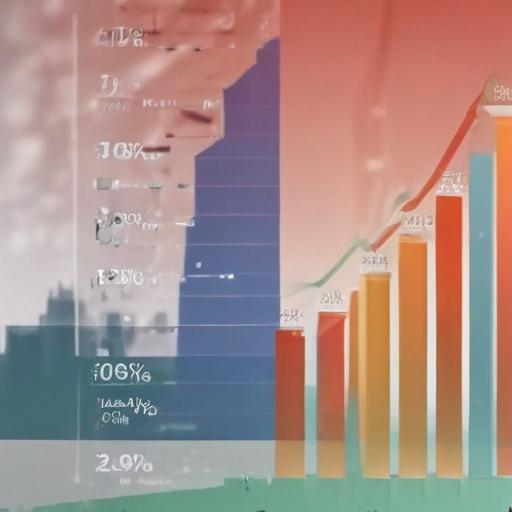India’s economy defies headwinds as April–June growth hits 7.8% year-on-year, underscoring a domestic engine powered by services, manufacturing and farm output. The data, released by the National Statistics Office, shows the strongest pace in five quarters and places India at the forefront of global growth, even as policymakers and investors weigh the impact of ongoing tariff tensions with the United States.
Sectoral drivers were broad-based:
– Agriculture expanded 3.7%, up from 1.5% a year earlier, aided by a solid sowing season.
– Manufacturing rose 7.7%, roughly steady with the year-ago quarter but well above the 4.8% pace in the prior quarter.
– Services led with a 9.3% surge, supported by trade, hotels, transport and financial services.
Demand conditions reinforced the strength:
– Private consumption rose 7.0, reflecting rural demand, durable goods spending and tax relief.
– Government expenditure climbed 9.7% in nominal terms, reversing a contraction in the previous quarter.
– Gross capital formation advanced 7.8%, though economists cautioned about private sector hesitancy amid tariff uncertainty.
Despite the robust real growth, nominal GDP growth cooled to 8.8% from a long-run average near 11%, a development that could weigh on corporate earnings and tax collections even as real activity stays buoyant.
Analysts weighed the quarter’s resilience against tariff-related headwinds. Aditi Nayar of ICRA cautioned that export and private capital expenditure could taper in the coming quarters if tariff uncertainty persists. Madhavi Arora of Emkay highlighted the macro hit from the 50% tariff on Indian exports, noting potential knock-on effects on employment, wages and private consumption. Capital Economics, while acknowledging tariff risks, characterized the quarter as a surprise acceleration that keeps India on track for a world-beating growth pace this year. DBS Bank’s Radhika Rao emphasized that markets would focus on GST rationalisation, government spending and revenue trajectories for the rest of the year. Suja Hajra of Anand Rathi Group pointed to reforms and controlled inflation keeping India’s macro story compelling despite tariff risks.
Export dynamics and the tariff saga
The tariff dispute stems from India’s continued purchases of discounted Russian oil, which Washington argues helps fund Moscow’s war in Ukraine. After a 50% duty hike, India has not retaliated but is pressing Washington for a review. Exporters estimate tariffs could affect as much as 55% of India’s US-bound shipments, potentially shifting some demand to rivals such as Vietnam, Bangladesh and China.
Policy responses and what to watch
The government has pledged targeted support for affected sectors and tax relief to cushion domestic demand. Earlier this month, consumption tax cuts were announced, with effects expected from October ahead of the festive season. IDFC First Bank Investors note that these cuts could lift nominal GDP by about 0.6 percentage points over 12 months. Officials also anticipate that easing inflation and GST rationalisation will help sustain consumer demand.
The Reserve Bank of India remains constructive on growth, projecting about 6.5% expansion for FY26 and signaling a likely hold on policy rates in its October review. Analysts say the stronger Q1 print reduces the case for near-term easing, even as export headwinds loom.
Global position and outlook
Even with tariff headwinds, India’s growth outpaced China, which posted 5.2% in the same quarter. Investors continue to view India as a vital alternative in global supply chains as firms reassess dependence on China.
What this means for India
– The June quarter reinforces India’s domestic strength, underscored by resilient farm output, a services boom and front-loaded government spending.
– Tariff escalation adds a meaningful risk to the export engine and private investment, requiring continued policy support and strategic diversification of trade.
– India’s growth narrative remains intact, supported by reforms, a competitive services sector and a push to expand manufacturing capacity.
Key takeaways
– Q1 GDP growth at 7.8% YoY, led by services (9.3%), manufacturing (7.7%), and agriculture (3.7%).
– Private consumption remains a major driver, with government spending and investment activity contributing significantly.
– Nominal GDP growth slowed to 8.8%, highlighting inflation dynamics as a constraint on earnings and revenues.
– Tariffs on India–US trade pose a material risk to exports and private capex; policy measures and GST rationalisation are aimed at cushioning demand.
– India remains the fastest-growing major economy, with growth outpacing China in the cited quarter and a focus on developing manufacturing capabilities to diversify supply chains.
Notes for editors
– The juxtaposition of robust real activity with slower nominal growth and tariff-related risks provides a nuanced view of India’s growth trajectory. Emphasize how policy steps—tax cuts, GST rationalisation, and potential inflation containment—aim to preserve momentum, while monitoring external headwinds from US duties.
Summary
India’s economy shows strong momentum driven by services, manufacturing and agriculture, even as tariffs threaten export growth. Policymakers are deploying tax relief and GST measures to support demand, and the RBI is signaling steadier monetary policy while markets monitor a potential shift in global supply chains away from China. Positive momentum persists, though the path forward hinges on managing export headwinds and sustaining private investment.
